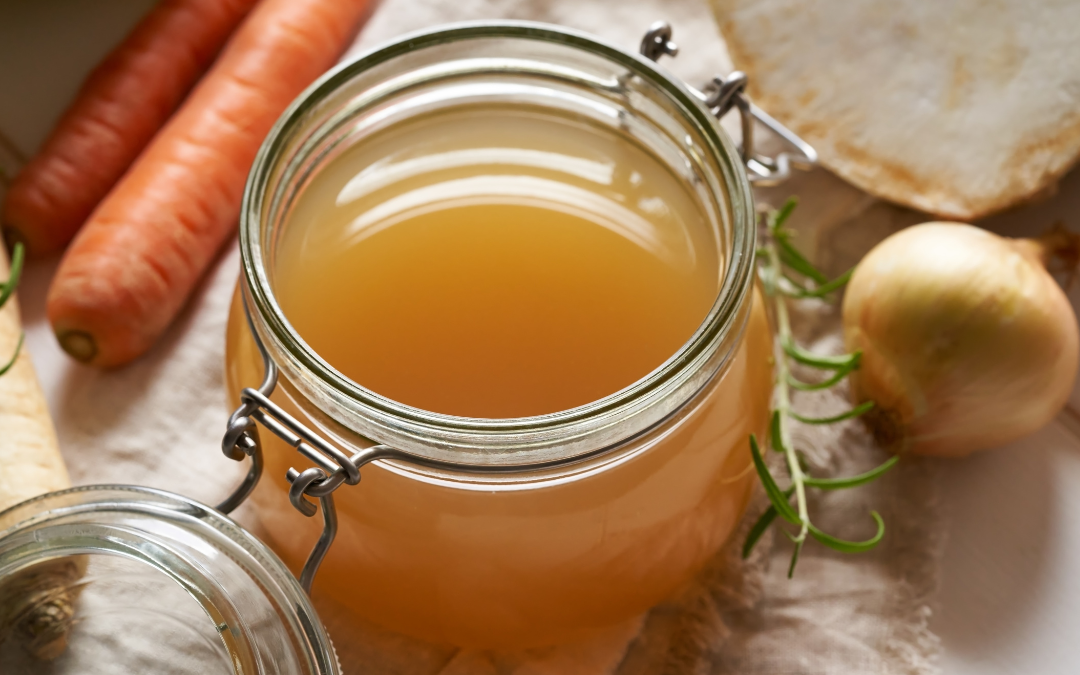“Double, double toil and trouble; fire burn, and cauldron bubble”
Whenever we hear the term bone broth, our brain instantly does a double-take and envisions three old cronies hanging onto the rim of boiling cauldron asking no one in particular: “where’s the eye of newt?” A literary knee-jerk reaction by way of Hamlet. We’re not exactly swept up into delightful culinary summersaults. Let’s be honest, the whole bone broth trend seems a bit too outlandish to say the least. Nonetheless, there’s a reason why South American shamans went “loco” for a tasty broth — as their proverb used to say. “a good broth can resurrect the dead.” Today, I’m going to give you the low-down on this Lazarus elixir, so you can appreciate it a bit better. Oh, and also an easy to do recipe.
The Early History Of Bone Broth
We can really pinpoint when the whole phenomenon began, but humans, back in the days when heavy protein meals meant attacking a sabertooth tiger with a sharp stick, were very diligent when it came to “waste not want not.” Back in those Flintstone-like days if you survived going to the grocery store, you recycled and made use of everything. That included the whole package the meat had come wrapped in. In those less than industrialized days, that meant bones, grizle, organs, skin, pelt, fingernails, I mean everything.
The first folks that started to experiment with bone broth and discovered some of its astounding properties, were the Chinese. They started prescribing it as a medicinal supplant, mainly for kidney failure and digestive problems. Over time other regions began to adopt the practice, amongst them the Koreans, the Japanese, the Romans, the Mesopotamians, and the Egyptians.
In ancient Greece, the father of medicine, Hippocrates, also became quite enamored of its properties.
Jewish Penicillin
In the 12th century, bone broth acquired a reputation and gained widespread popularity. It became known as “Jewish penicillin” after the famous physician Maimonides started prescribing the now legendary chicken soup. BUT, and here’s the hiccup, Campbell fails to mention. The original recipe, the one that pushed that bowl of fever-fighting goodness into the limelight, was in reality a big steaming pot of, you guessed it, bone broth. Chicken was used simply to give the whole concoction a different taste. And also for marketing purposes; “chicken soup,” seems more attractive than “bone bouillon.”
The medical benefits of bone broth
- Great source of amino acids.
- Excellent for gut health and digestion.
- Improves our immune system.
- Fights off ageing.
- Supports joint and muscle health
- Improves body mass in the elderly.
- Improves lean muscle mass.
Recipe: Bone Broth For The Soul
Let’s give you a workaround of that 12th-century miracle cure that launched a soup empire.
INGREDIENTS
- 1.5 kg beef bones
- 2 tablespoons apple cider vinegar
- 2 medium carrots (roughly chopped)
- 3 celery stalks (roughly chopped)
- 2 medium onions (roughly chopped)
- 1 bay leaf
- A few peppercorns
- A few cloves of garlic
INSTRUCTIONS
- Place bones in a large pot, fill with water, and add half a cup of vinegar. Let it sit for at least an hour. The vinegar will draw all that good stuff out of the bones.
- Place veggies, bay leaf, peppercorns, garlic inside the pot and cover it with water.
- Bring to a high simmer.
- Once you have that pot boiling, grab a copy of Hamlet and go to town. Remember unrhymed iambic pentameter recitation. So break out those syllables and conjure up Patrick Stewart when reciting “double, double toil and trouble.”
- Once you get the Bard out of your system, reduce the concoction to low heat and let it simmer for 12-24 hours. The more, the better.
- Add water whenever you feel it’s becoming scarce.
- Turn off and let it cool.
- Once the pot has cooled, take the bones and veggies out and strain the liquid through a colander into a big jug.
- Once it’s acquired room temperature pour it into jars and store it in the fridge.
- When you want to chow down, just take a jar out, skim the fat and heat the broth to your desired temperature.
Tips:
- For that extra punch, roast the bones in an oven first. Adds an extra kick and gives the whole broth a nice smoky aftertaste.
- If you have a slow cooker, then you’re set — crank that puppy up to low and take the day off while it does its magic.
- Keep the fat for cooking.
- You can use the broth as a base for other soups or casserole — add salt, butter, spices, or other herbs for taste.

